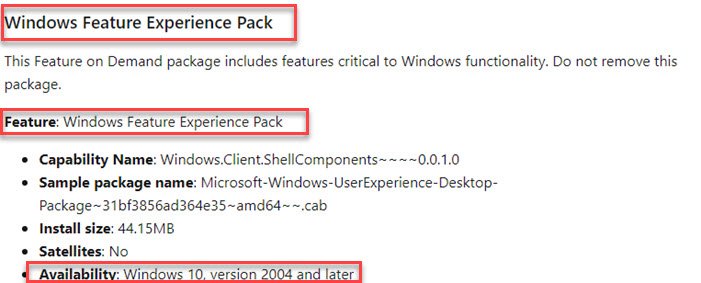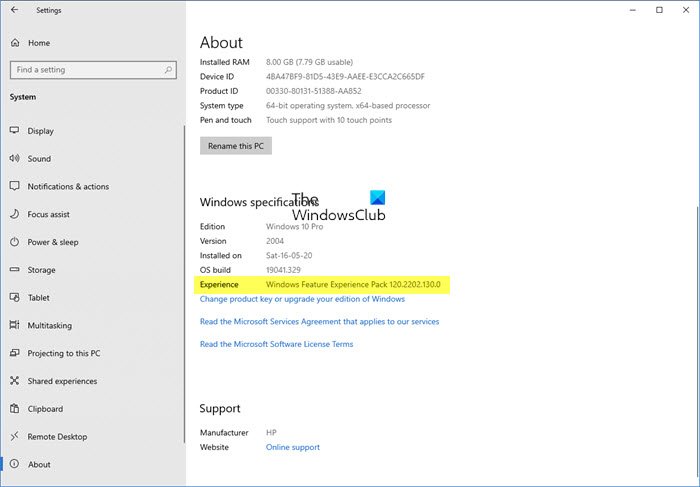If you are a long time Windows user, especially since the days of Windows XP and Windows 7, the name Windows Experience Pack may sound familiar. Announced in 2010, it allowed you to create a theme, apply a static image to Live Messenger, etc. It was about customizing the user interface. So why are we talking about it now? The functionality or product returns to Windows 10, but in a different way. In this post, we will try to explain what is the Windows Features Experience Pack in Windows 10.
Windows 10 Feature Experience Pack
Listed as essential for Windows functionality, the pack began to be available from Windows 10 v2004 in the Microsoft Store. However, it is in its infancy. And although you can download it on an earlier version of Windows, it doesn’t show anything. we reported on this in December when Windows 10 development teams split into Core OS & Shell Experience teams.
Right now, the user interface update and the main update go hand in hand. However, now that the team is split, additional user interface changes can be deployed with the Windows 10 Feature Experience Pack. It is listed as an on-demand feature for Windows 10 and Windows Server with IE 11, Notepad, Paint, PowerShell, Print Management Console, etc. It can be easily noticed in the Abut section of the computer, which was upgraded around 2004.
Although Microsoft hasn’t clarified anything about this, but what it will look like will be a way to roll out an update for parts of the user interface. Since it’s a pack, we should see more apps and features available. For example, it may become possible to choose not to install certain basic features like the Xbox and the Xbox game bar because I don’t use it at all. Likewise, other features that are not used by consumers such as the capture tool can be ignored. Another crazy idea going around is a customizable shell for the main operating system, depending on the device and consumers.
They will support the list of features available on request listed by Microsoft. Notes, Paint, PowerShell, Steps Recorder are now part of the Windows Feature Experience pack. They come preinstalled in Windows 10 2004, but what they do say is that Windows will become more customizable and functionality will no longer be forced. If you like an application that has always been at the heart of the OS, it can be deleted.

Microsoft has also listed FODs that are not preinstalled. It includes accessibility, developer mode, graphical tools, IrDA, Microsoft WebDriver, networking tools, etc.
We should learn more about the Windows Features Experience Pack this year, as more and more packages are starting to appear in the app. Whether the feature will remain or if Microsoft will stick to two updates each year, which could be overwhelming for many, we will know in time.
Now read: How to customize the Windows 10 Start menu and taskbar.

